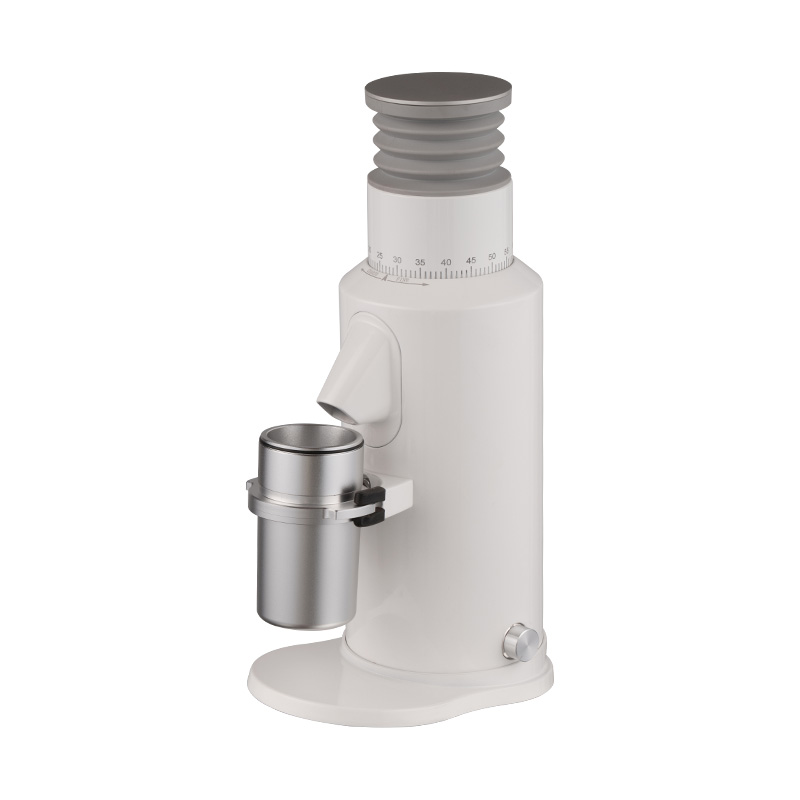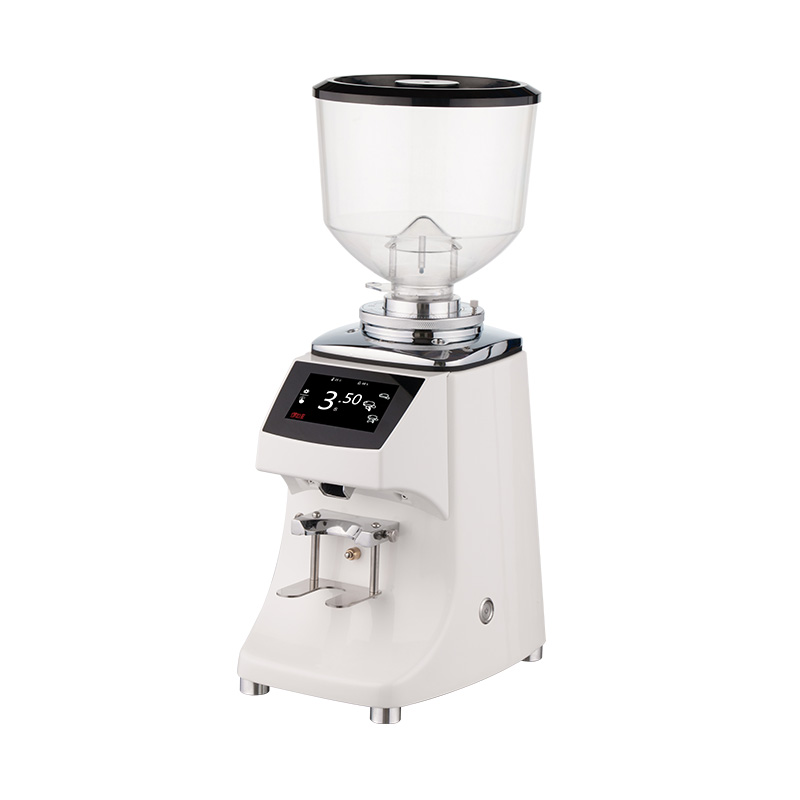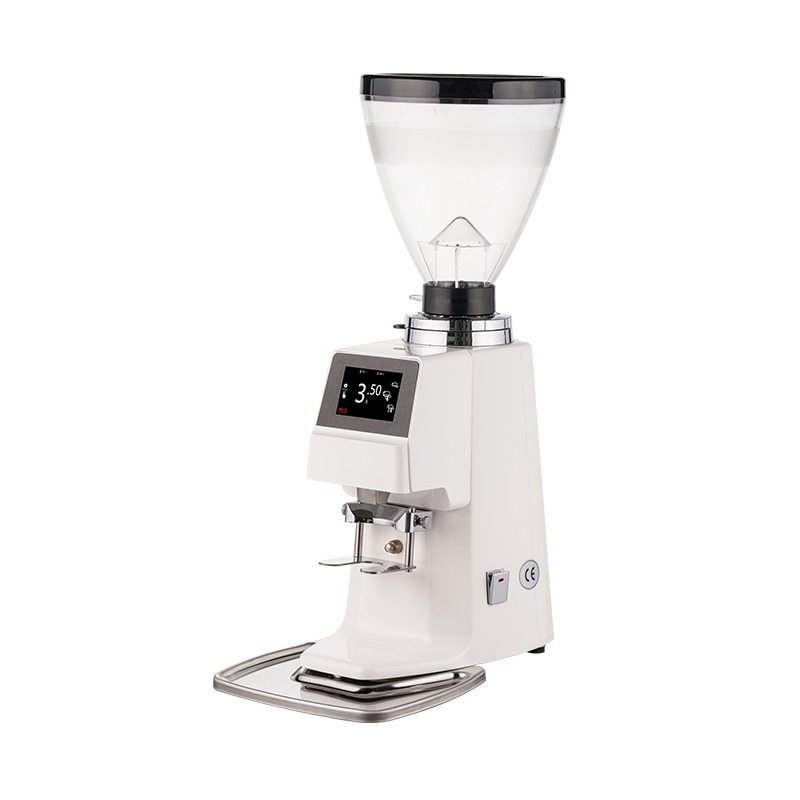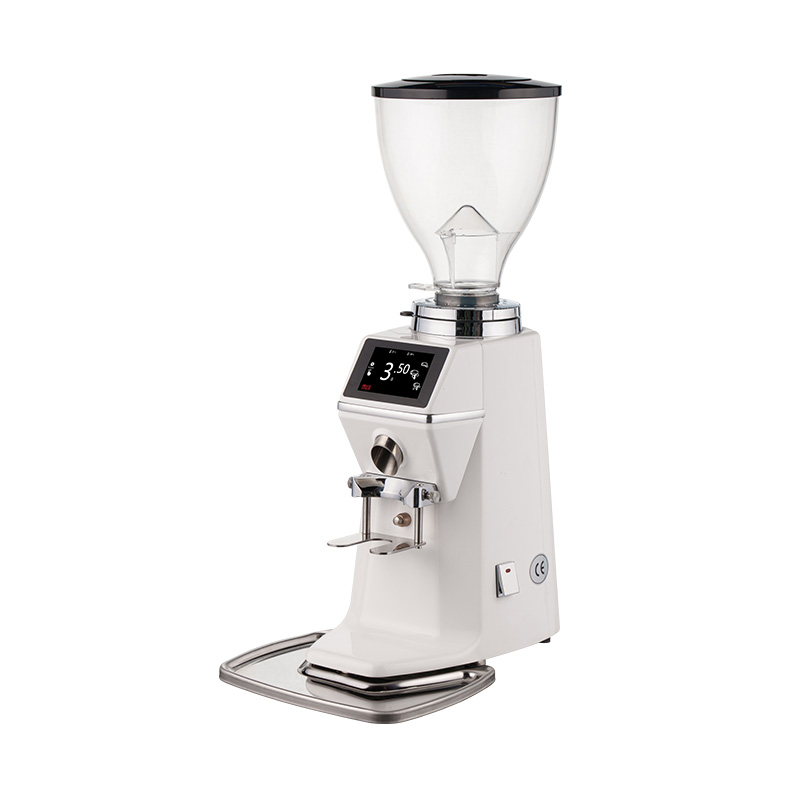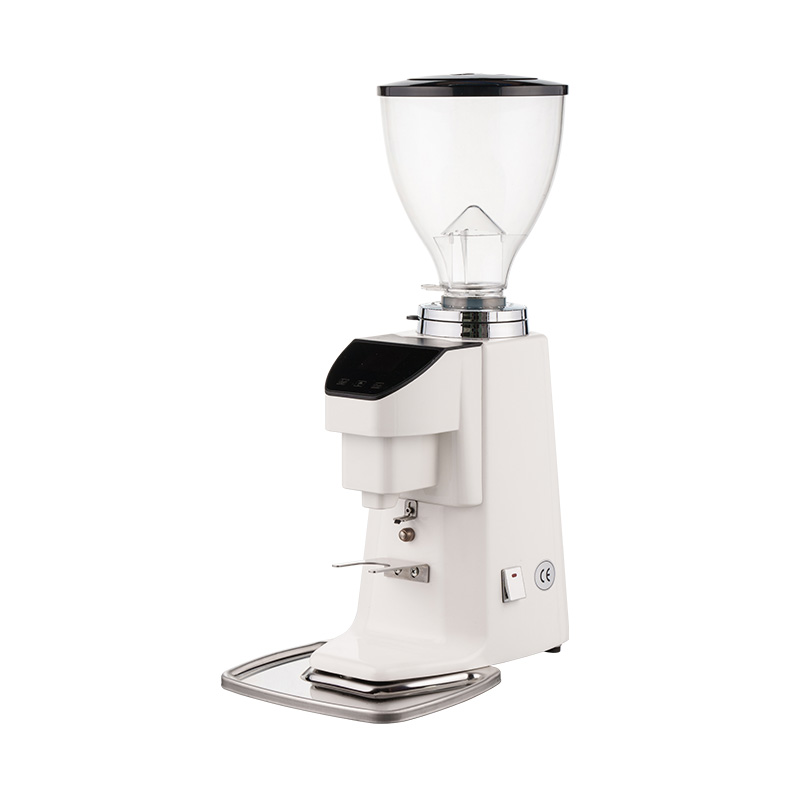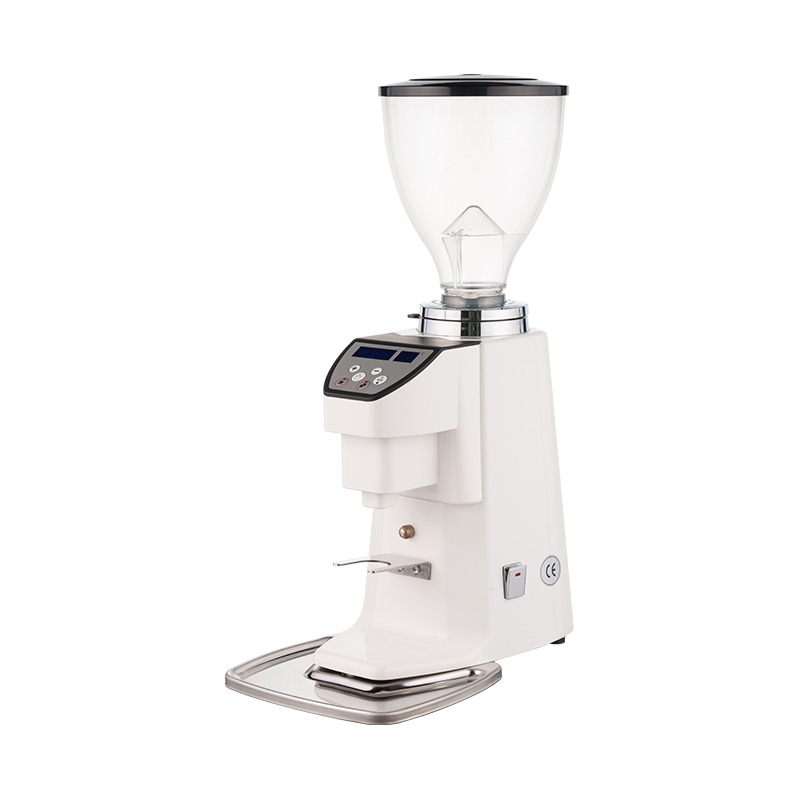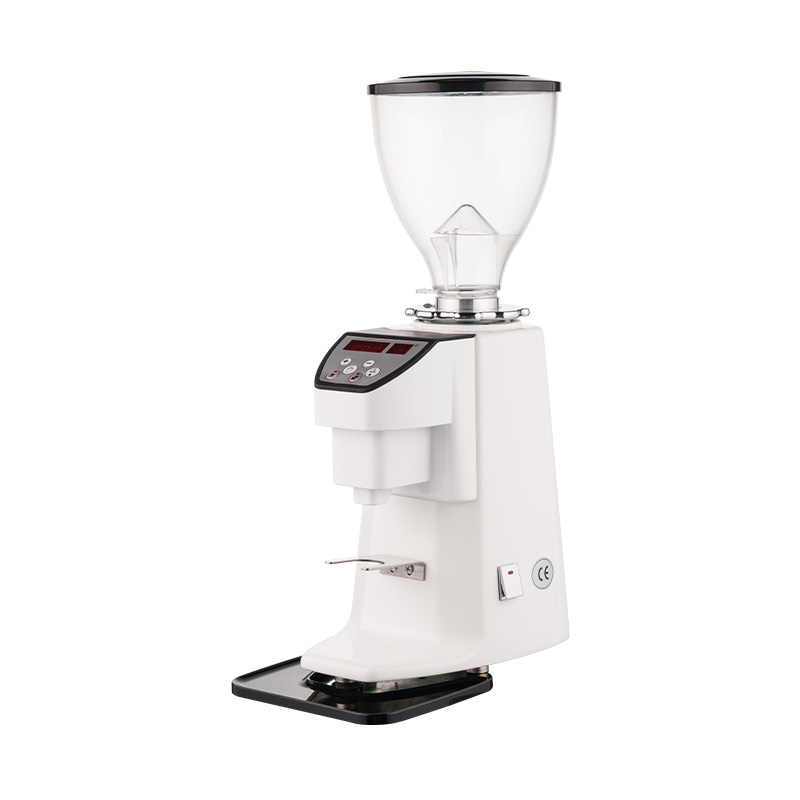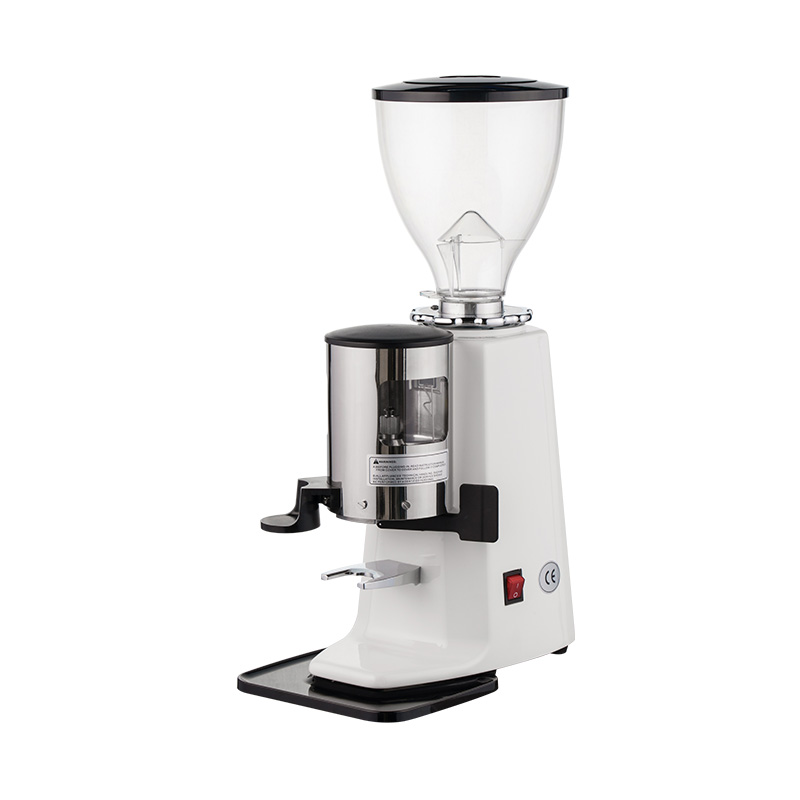We support OEM&ODM services, welcome to inquire
How does blade temperature monitoring technology lead the double leap in quality and safety?
Consumers have higher and higher requirements for the quality of coffee. As an indispensable part of coffee making, the performance and technological innovation of coffee grinders are increasingly valued. In recent years, a coffee grinder that can monitor blade temperature has appeared on the market, which not only improves the accuracy of coffee grinding, but also enhances the reliability and safety of the equipment.
During the coffee grinding process, the blade is the component that directly contacts the coffee beans and generates friction heat. This friction not only affects the uniformity and taste of coffee grinding, but also causes the blade temperature to rise. Long-term high-temperature operation not only affects the performance and life of the blade, but may also have a negative impact on the quality of coffee grinding. Therefore, coffee grinder that can monitor blade temperature has become the key to ensuring the stable operation of coffee grinders and improving coffee quality.
Blade temperature monitoring technology achieves real-time monitoring of blade temperature by installing high-precision temperature sensors in the grinder. These temperature sensors usually use components such as thermistors or thermocouples, which can accurately sense changes in blade temperature. At the same time, in order to ensure the accuracy and real-time nature of data transmission, the control system usually uses high-speed data bus or wireless communication technology to transmit blade temperature data to the display or supporting applications in real time.
Blades are prone to thermal expansion or thermal stress in high temperature environments, resulting in reduced hardness and wear resistance. Long-term high-temperature operation will accelerate the wear of the blade and make its surface rough, which will affect the uniformity and taste of the grinding; high temperature environment will increase the internal temperature of the motor and reduce the working efficiency of the motor. In order to maintain the high-speed rotation of the blade, the motor needs to consume more energy, which increases the load on the motor. Long-term high-load operation will cause the motor to overheat and even cause failure or damage; high temperature has a negative impact on the stability and reliability of electronic components. In a high temperature environment, the performance of electronic components will change, which may cause failure or misoperation of the control system. This is undoubtedly a huge challenge for coffee grinders that need to accurately control grinding parameters. Coffee grinders that can monitor blade temperature may contain some plastic and rubber parts, such as seals, drive belts, etc. Long-term high temperature will accelerate the aging process of these parts, resulting in performance degradation and damage. This will not only affect the overall performance of the coffee grinder that can monitor blade temperature, but may also cause safety hazards.
In order to ensure the accuracy of blade temperature monitoring, modern coffee grinders usually use high-precision temperature sensors. These sensors are highly sensitive and quick to respond. They can sense changes in blade temperature in real time and transmit data to the control system for processing. Through blade temperature monitoring technology, coffee grinder that can monitor blade temperature can achieve intelligent control. The control system can automatically adjust grinding parameters such as grinding speed and grinding degree according to blade temperature data to maintain the appropriate temperature range of the blade. This intelligent control not only improves the accuracy and quality of coffee grinding, but also enhances the stability and reliability of the equipment. When the blade temperature exceeds the set threshold, the control system will issue an early warning signal to remind the user to deal with it in time. This fault warning function helps to avoid equipment failure and damage caused by overheating, reducing maintenance costs and time. The accompanying application can record and analyze the change history of blade temperature. Users can understand the use and performance changes of the grinder based on this data for maintenance and maintenance. In addition, by analyzing the blade temperature data, users can also understand the temperature characteristics of different coffee beans during the grinding process, thereby optimizing the grinding parameters and improving the quality of coffee.
The blade temperature monitoring technology in coffee grinder that can monitor blade temperature is an innovative and practical technology. It not only ensures the accuracy and quality of coffee grinding, but also improves the reliability and safety of the equipment.
-
Feedback

 English
English русский
русский
